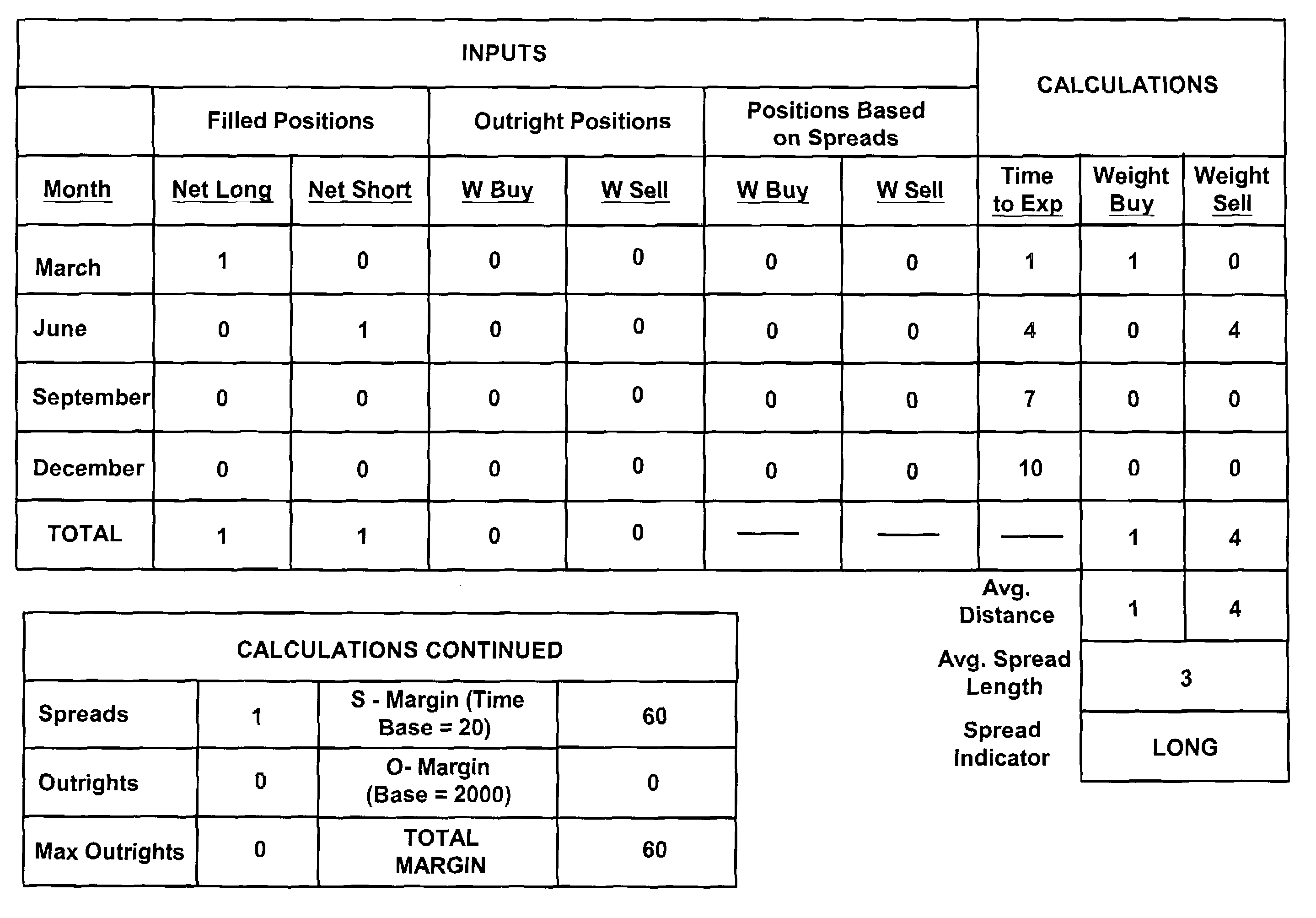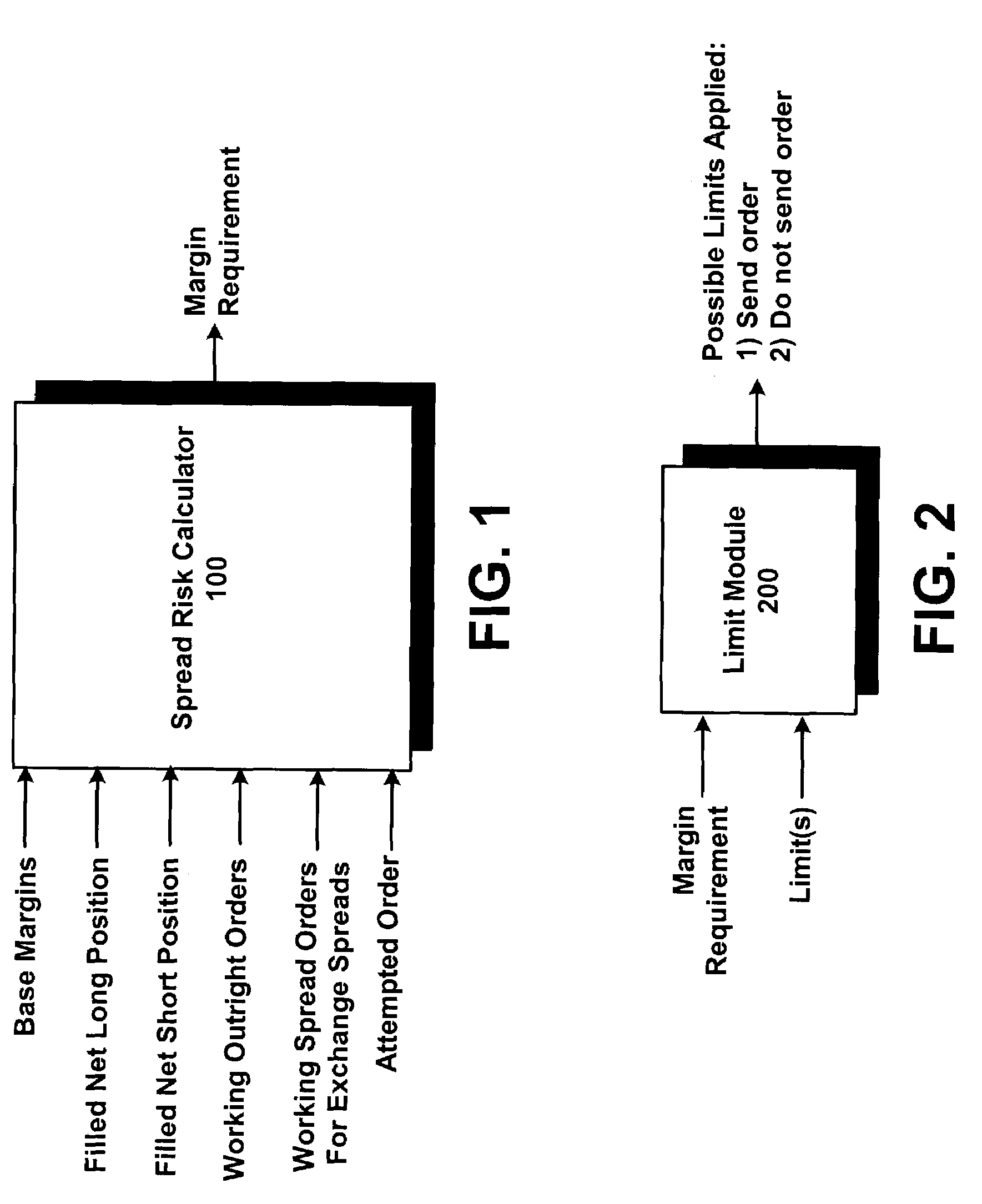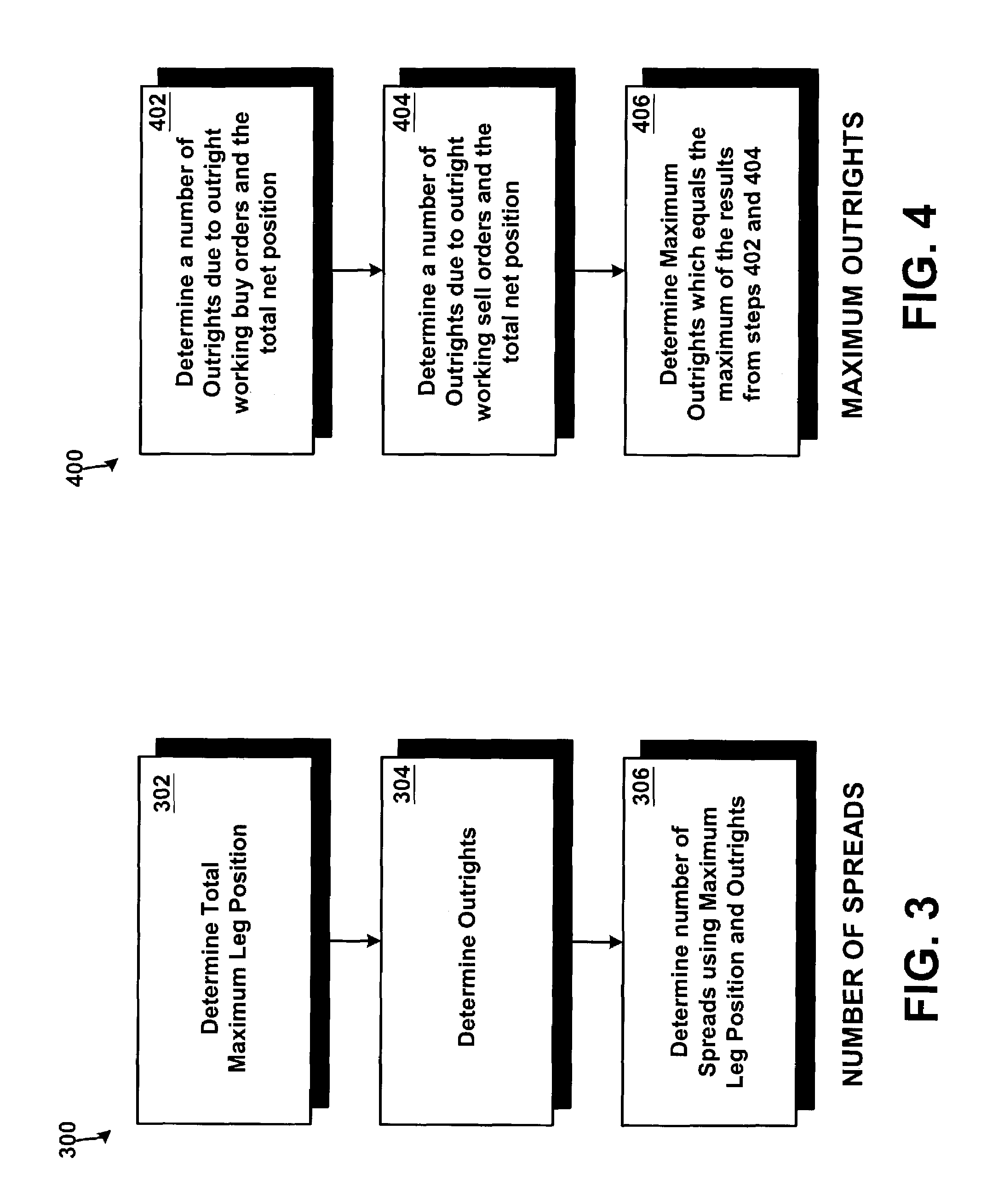System and method for risk management using average expiration times
a risk management and average expiration time technology, applied in the field of electronic exchanges, can solve the problems of affecting the balance in the margin account of the trader, affecting the margin requirement of the trader, and not necessarily remaining fixed
- Summary
- Abstract
- Description
- Claims
- Application Information
AI Technical Summary
Benefits of technology
Problems solved by technology
Method used
Image
Examples
example 6
F. Example 6
[0067]FIG. 10 shows that a working buy March / June spread order was entered and filled. So, the total net long is “2” and the total net short is “2.” The total maximum leg position remains at “4.” The total outrights is still “0,” but the number of spreads remains at “2.” The S-Margin position is 10*2=20. The total position is 20+0=20. The margin requirement is “20.”
V. Examples for Computing a Margin Requirement Using Average Expirations in Order to Compute Margin Values for Spreads
[0068]FIGS. 11-15 show example inputs and a margin requirement output from a module that operates substantially similar to the spread risk calculator described with respect to FIG. 1. The formulas for computing the margin requirement are similar to those previously described. However, the system may be modified to use average expirations in order to compute the margin values for spreads.
[0069]As previously described, a spread may be used to hedge a trader's risk in trading a tradeable object. T...
example 1
A. Example 1
[0090]FIG. 11 shows one filled long position in an outright market for March, and it shows one filled short position in an outright market for June. Although these are outright positions, they may be treated as legs of a spread in order to generate a reduced margin requirement for the trader. The total number of net long positions is one, and the total number of net short positions is one. The system then combines these two positions to form a spread. Thus, for purposes of computing the margin requirement, the system treats the trader has having one spread position and no outright positions.
[0091]Using the previously described formulas, the March S_leg Long is “1”, and the June S_leg Short is also “1.” The March Individual Legs S Buy is “1”, and the June Individual Legs S Sell is “1.” The March weighted buy is then 1*1=1, and the June weighted sell is 1*4=4. These then represent weighted distances to the buy and sell expiration times (e.g., delivery dates). In this examp...
example 2
B. Example 2
[0096]FIG. 12 shows the March long position, and it also shows a September short position in the outright market. Similar to FIG. 11, FIG. 12 has two outright positions that the system combines to form a spread when computing the trader's margin requirement. The March / September spread of FIG. 12 has legs that are farther apart than the March / June spread of FIG. 11. Therefore, and as shown in this example, the system computes a higher margin value for the March / September spread than it computes for the previously described March / June spread.
[0097]For this example, the March S_leg Long is “1”, and the September S_leg Short is “1.” The March Individual Legs S Buy is “1”, and the September Individual Legs S Sell is “1.” The weighted buy value is then 1*1=1. The weighted sell value is 1*7=7. The weighted buy average distance is 1 / 1=1. The weighted sell average distance is 7 / 1=7. Using these two numbers, the system computes the average spread length. The average spread length ...
PUM
 Login to View More
Login to View More Abstract
Description
Claims
Application Information
 Login to View More
Login to View More - R&D
- Intellectual Property
- Life Sciences
- Materials
- Tech Scout
- Unparalleled Data Quality
- Higher Quality Content
- 60% Fewer Hallucinations
Browse by: Latest US Patents, China's latest patents, Technical Efficacy Thesaurus, Application Domain, Technology Topic, Popular Technical Reports.
© 2025 PatSnap. All rights reserved.Legal|Privacy policy|Modern Slavery Act Transparency Statement|Sitemap|About US| Contact US: help@patsnap.com



